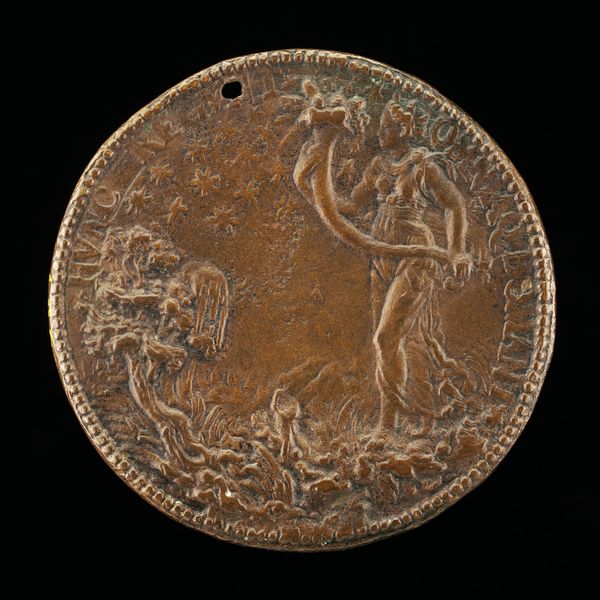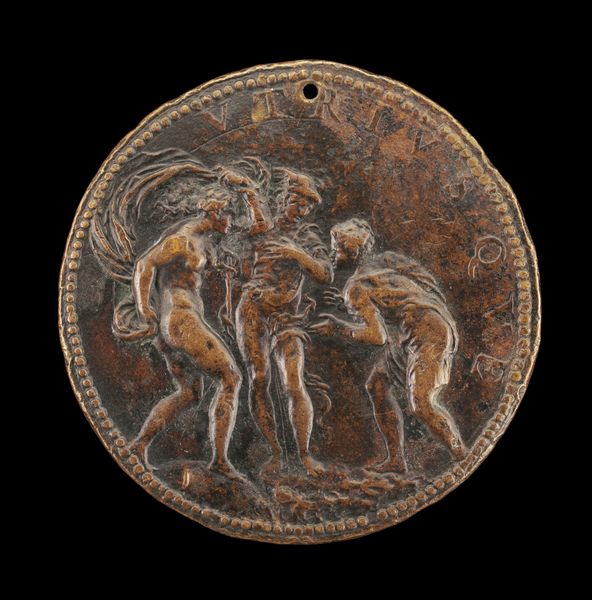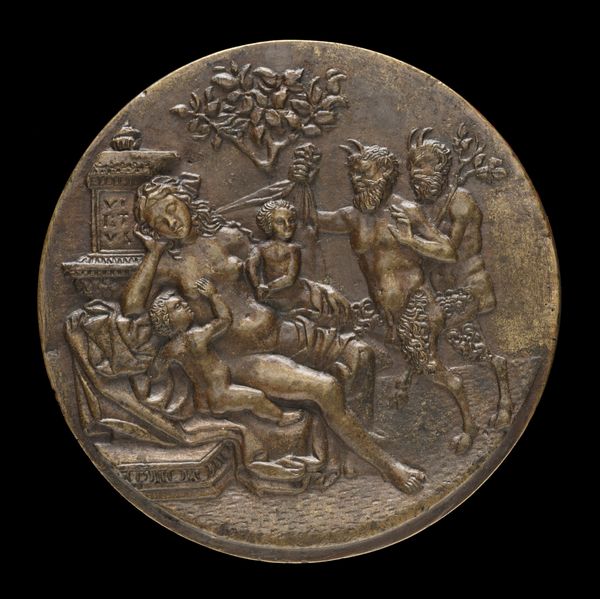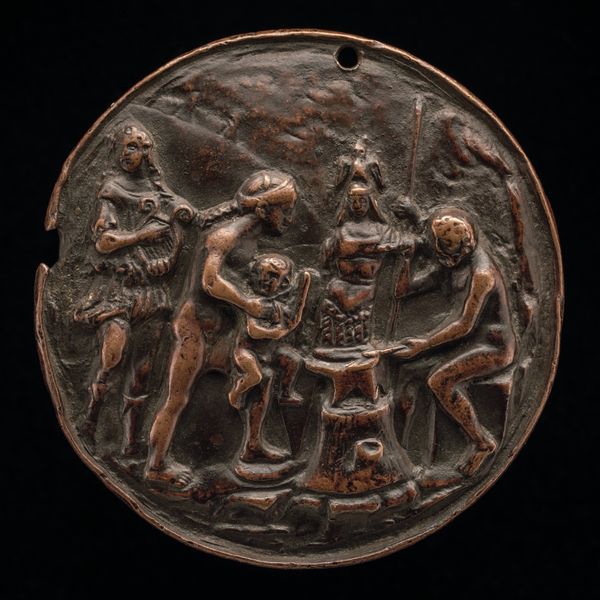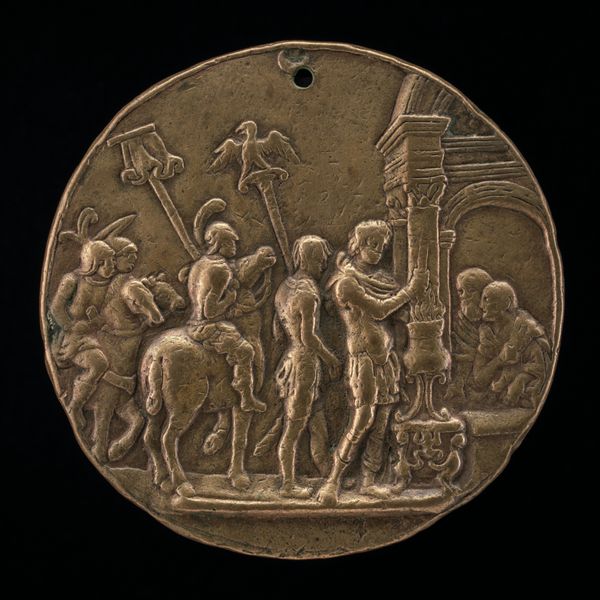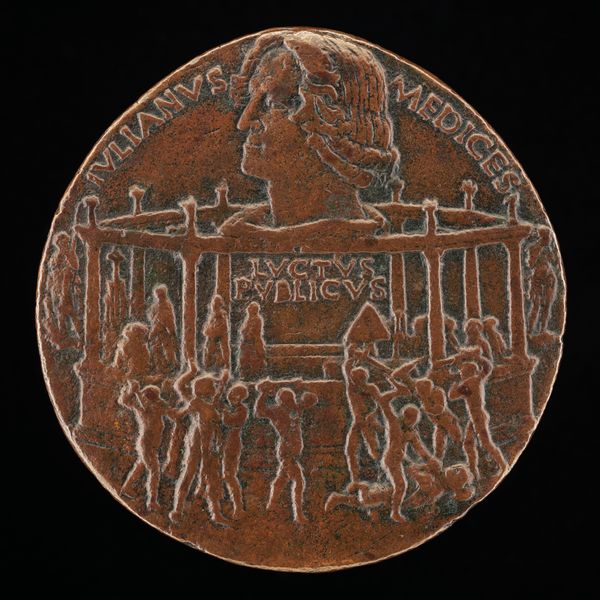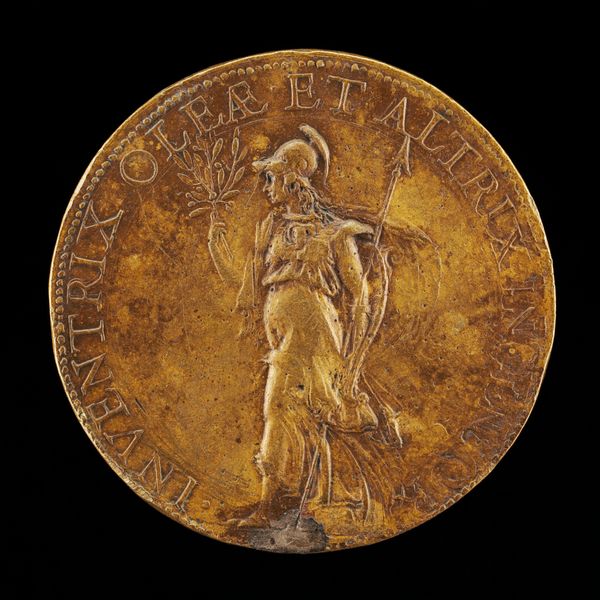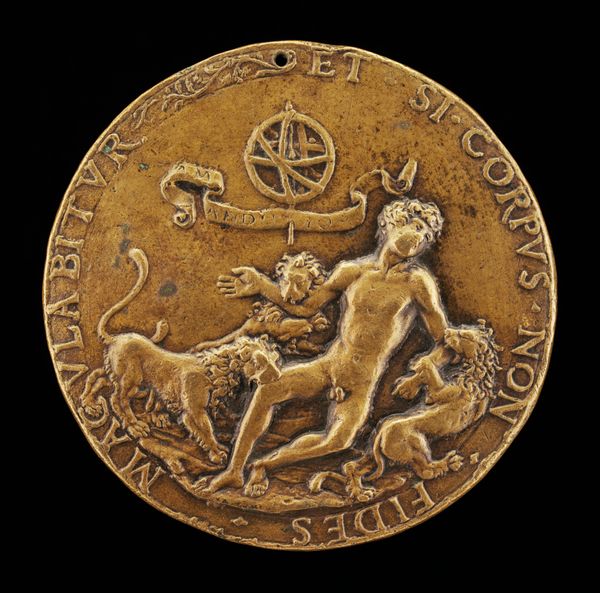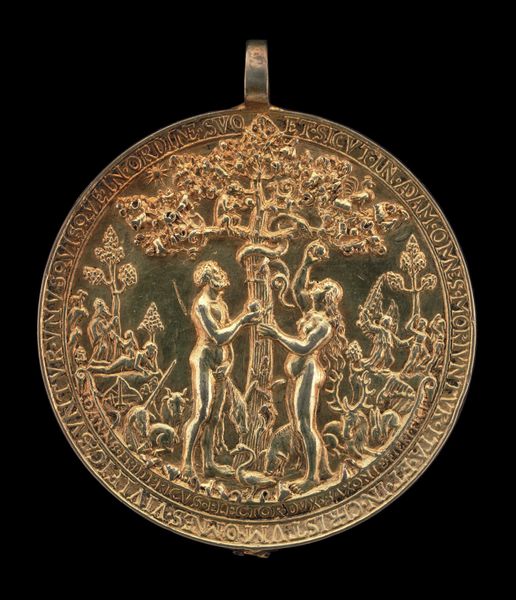![Hercules Pursuing Nessus and Deianira [reverse] by Bertoldo di Giovanni](/_next/image?url=https%3A%2F%2Fd2w8kbdekdi1gv.cloudfront.net%2FeyJidWNrZXQiOiAiYXJ0ZXJhLWltYWdlcy1idWNrZXQiLCAia2V5IjogImFydHdvcmtzL2Q3NDBmMjUxLThjZmYtNDIxNi1iNzhkLWFmMjlkMjU1NTYzNy9kNzQwZjI1MS04Y2ZmLTQyMTYtYjc4ZC1hZjI5ZDI1NTU2MzdfZnVsbC5qcGciLCAiZWRpdHMiOiB7InJlc2l6ZSI6IHsid2lkdGgiOiAxOTIwLCAiaGVpZ2h0IjogMTkyMCwgImZpdCI6ICJpbnNpZGUifX19&w=3840&q=75)
relief, bronze, sculpture
#
sculpture
#
relief
#
bronze
#
figuration
#
sculpture
#
history-painting
#
italian-renaissance
Dimensions: overall (diameter): 8.25 cm (3 1/4 in.) gross weight: 197.99 gr (0.436 lb.) axis: 12:00
Copyright: National Gallery of Art: CC0 1.0
Editor: Here we have Bertoldo di Giovanni's bronze relief, "Hercules Pursuing Nessus and Deianira," from around 1475. It's a dynamic composition on a small, circular surface, almost like a coin. What strikes me most is the frantic energy—but what do you see in this piece? Curator: For me, this image speaks volumes about the Renaissance fascination with classical antiquity, not just as a historical period but as a repository of enduring symbols. The Hercules myth, and the image of him triumphing, resonated deeply. Notice how the swirling composition evokes turmoil but also highlights Hercules’s inherent *virtus*, as the inscription implies—his moral and physical strength. What emotional qualities do you think this highlights? Editor: Definitely bravery, maybe a righteous anger? But I guess I'm still wondering, why this particular scene? Why not one of Hercules’ other famous labors? Curator: Ah, a keen question. The abduction of Deianira was a popular scene because it involved themes of violence, betrayal, and the defense of the innocent—very relevant to the concerns of the Renaissance city-states, always wary of threats, and idealizing strength against rivals. See how the artist placed that woman, Deianira, far to the upper side, indicating her emotional distress and elevated importance within this scene, despite her relatively static pose compared to other characters? Editor: That's really interesting. It makes the scene much more than just an action shot, it tells an allegory about leadership and public morality. I'll definitely view Renaissance art with new eyes. Curator: Indeed! These images were carefully designed to inspire particular virtues and convey complex meanings, going beyond mere decoration, they carry significant weight. Editor: This makes me really appreciate how much history and culture are embedded within these classical narratives and the work of art!
Comments
No comments
Be the first to comment and join the conversation on the ultimate creative platform.
